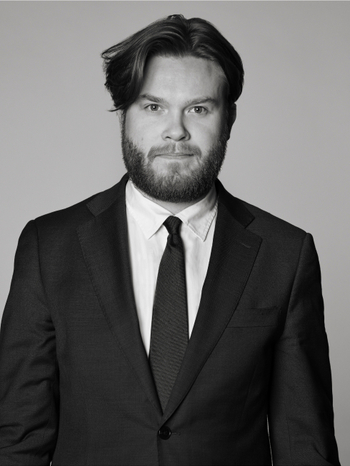Gustaf Fjaestad
Ski Tracks in the Afternoon Sun
Signed Fjaestad and dated 1944. Oil on panel, 88 x 116 cm.
Muut tiedot
In the painting currently up for auction from 1944, we see Gustaf Fjaestad depicting the deep ski tracks in the winter landscape of Värmland. It was indeed a ski trip 47 years earlier that brought the artist to Värmland for the first time, a trip that would mark a radical turning point in the young artist's life.
The year was 1897, and Fjaestad was living in Stockholm. He had begun his artistic career earlier in the decade and had been involved as an assistant in two of the major art projects of the time: Carl Larsson's wall paintings at the National Museum and Bruno Liljefors' panoramic paintings at the Biological Museum.
"Snow King of the North," as German art critics called him, was a well-known epithet for Fjaestad even before he made his breakthrough as an artist. He was also a successful athlete, holding the world record in an English mile on skates and having won the first cycling race around Lake Mälaren.
When he took the ski trip to Värmland in 1897, he fell in love with the place. At that time, the Eriksson Brothers' Furniture Workshop was located outside Arvika in Värmland, whose production during the 1890s had gained fame. When Fjaestad married Maja Hallén in the summer of 1898, one of the brothers, Christian Eriksson, had moved to Stockholm. He offered the newlywed couple to move into his newly built studio Oppstuhage, which he had constructed on the family estate in Taserud on the northern outskirts of Arvika. Värmland became their home for the rest of their lives, and both were buried in Arvika.
For Fjaestad, depicting the Värmland landscape became a lifelong project. When he was interviewed in 1944, the same year the painting currently up for auction was executed, and was asked why they chose Rackstad, he replied, "In Sundbyberg, no Pan lives," illustrating how industrialization and urbanization left their marks even on the outskirts of the city.












































